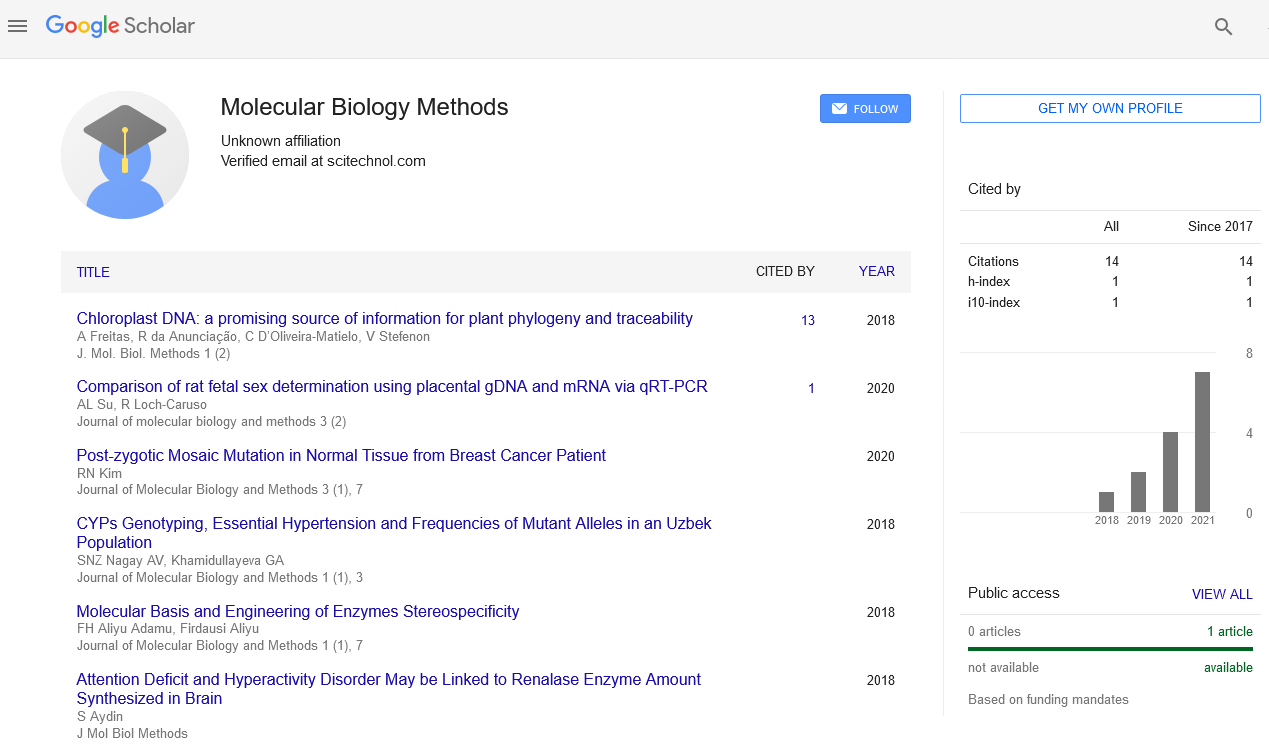Commentary, J Mol Biol Methods Vol: 6 Issue: 2
Metabolomics Data Analysis and Metabolic Pathway Modeling in Precision Medicine
Nicolas Somaveries*
1Department of Endocrinology and Endocrine Oncology, Haut-Lévêque Hospital, Pessac, France
*Corresponding Author: Nicolas Somaveries,
Department of Endocrinology and
Endocrine Oncology, Haut-Lévêque Hospital, Pessac, France
E-mail: somaveriesnicolas@yahoo.com
Received date: 22 May, 2023, Manuscript No. JMBM-23-108100;
Editor assigned date: 26 May, 2023, Pre QC No. JMBM-23-108100 (PQ);
Reviewed date: 10 June, 2023, QC No. JMBM-23-108100;
Revised date: 19 June, 2023, Manuscript No: JMBM-23-108100(R);
Published date: 28 June, 2023, DOI: 10.35248/jmbm.1000137
Citation: Somaveries N (2023) Metabolomics Data Analysis and Metabolic Pathway Modeling in Precision Medicine. J Mol Biol Methods 6:2.
Description
Precision medicine, also known as personalized medicine, is an approach that tailors medical treatments and interventions to individual patients based on their unique genetic, environmental, and lifestyle factors. It aims to improve the effectiveness of therapies and reduce adverse effects by accounting for individual variability. Metabolomics, a rapidly evolving field of omics sciences, plays a pivotal role in precision medicine by analyzing the small molecules or metabolites within biological systems. Metabolomics data analysis and metabolic pathway modeling are essential components of precision medicine research, offering valuable insights into disease mechanisms, biomarker discovery, and therapeutic interventions. Metabolomics is concerned with the comprehensive analysis of all metabolites present in biological samples, such as blood, urine, or tissues. It offers a snapshot of the metabolic state of an individual at a specific time, reflecting the ongoing physiological processes, genetic interactions, and environmental influences. The first step in metabolomics data analysis involves data acquisition, where advanced analytical techniques like Mass Spectrometry (MS) and Nuclear Magnetic Resonance (NMR) spectroscopy are used to measure and quantify metabolites. Once the data is obtained, it undergoes preprocessing to remove noise, correct for experimental variations, and normalize the dataset for meaningful comparisons. Statistical methods like Principal Component Analysis (PCA), Partial Least Squares-Discriminant Analysis (PLS-DA), and hierarchical clustering aid in identifying patterns and clustering samples based on their metabolic profiles. These techniques enable the detection of metabolic differences between healthy and diseased individuals or responses to specific treatments. Metabolomics data analysis also involves the identification of potential biomarkers—metabolites that are associated with a particular disease or treatment outcome. By comparing metabolite levels between different patient groups, researchers can discover biomarkers that may serve as diagnostic tools, prognostic indicators, or therapeutic targets. This information is invaluable in guiding precision medicine strategies for individual patients, enhancing the accuracy and efficacy of treatment plans.
Metabolic pathway modeling is a computational approach that helps unravel the complex interplay of metabolites and enzymes in cellular metabolism. By integrating metabolomics data with prior knowledge about metabolic pathways, researchers can build comprehensive models that simulate the flow of metabolites through various biochemical reactions. These models can be refined and validated using experimental data, enabling a deeper understanding of the underlying mechanisms of diseases and drug responses. One of the key advantages of metabolic pathway modeling in precision medicine is the ability to predict how perturbations in the metabolic network, such as genetic mutations or environmental factors, impact the overall system behavior. These predictions can provide insights into disease pathogenesis and identify potential therapeutic targets.
Moreover, personalized metabolic models can be constructed for individual patients, incorporating their specific genetic variations and metabolic profiles. These patient-specific models can then be used to simulate the effects of different treatments and predict the most effective therapeutic interventions. Despite the tremendous potential of metabolomics data analysis and metabolic pathway modeling in precision medicine, several challenges persist. One major hurdle is the integration and interpretation of multi-omics data, which involves integrating information from genomics, transcriptomics, proteomics, and metabolomics to gain a comprehensive understanding of the disease. The development of advanced computational tools and algorithms is critical for seamless data integration and analysis. Another challenge lies in standardization and reproducibility of metabolomics experiments. Since metabolomics data is generated using different technologies and platforms, there is a need for standardized protocols and quality control measures to ensure the reliability and comparability of data across studies.
Looking ahead continued research and technological advancements in metabolomics and bioinformatics will play a crucial role in overcoming these challenges. As the field progresses, we can expect more sophisticated analytical methods, enhanced predictive models, and deeper insights into the intricate metabolic networks that govern human health and disease. Ultimately, metabolomics data analysis and metabolic pathway modeling will pave the way for more precise and personalized therapeutic interventions, revolutionizing the landscape of medicine and patient care.
 Spanish
Spanish  Chinese
Chinese  Russian
Russian  German
German  French
French  Japanese
Japanese  Portuguese
Portuguese  Hindi
Hindi 